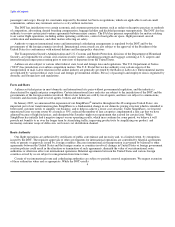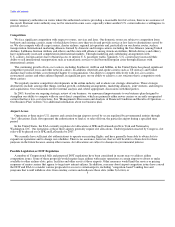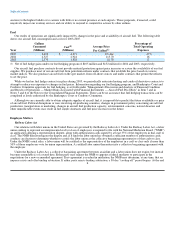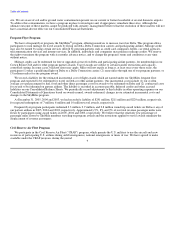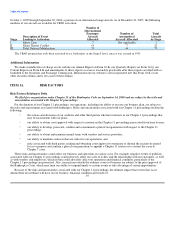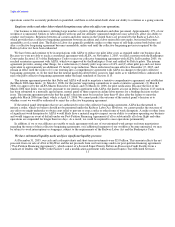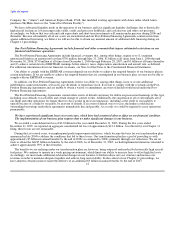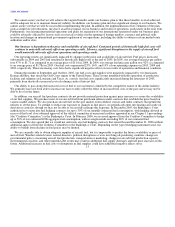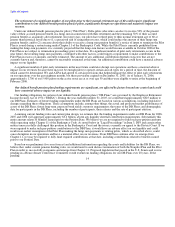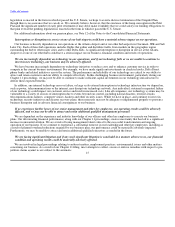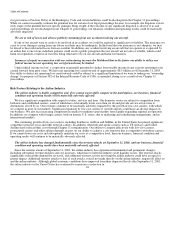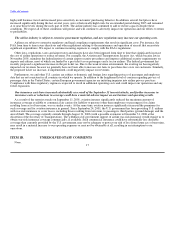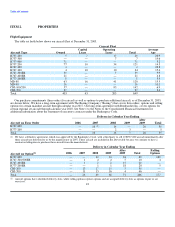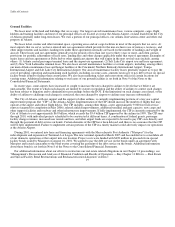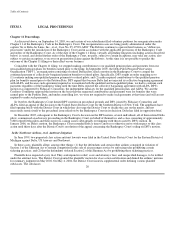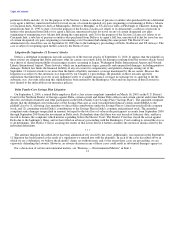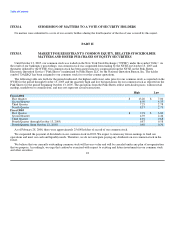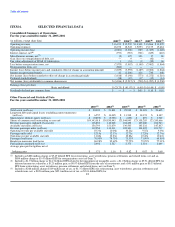Delta Airlines 2005 Annual Report Download - page 19
Download and view the complete annual report
Please find page 19 of the 2005 Delta Airlines annual report below. You can navigate through the pages in the report by either clicking on the pages listed below, or by using the keyword search tool below to find specific information within the annual report.
Table of Contents
The retirement of a significant number of our pilots prior to their normal retirement age of 60 could require significant
contributions to our defined benefit pension plan for pilots, significantly disrupt our operations and negatively impact our
revenue.
Under our defined benefit pension plan for pilots ("Pilot Plan"), Delta pilots who retire can elect to receive 50% of the present
value of their accrued pension benefit in a lump sum in connection with their retirement and the remaining 50% of their accrued
pension benefit as an annuity after retirement. In recent years, our pilots have retired prior to their normal retirement age of 60 at
greater than historical levels due to (1) a perceived risk of rising interest rates, which could reduce the amount of their lump sum
pension benefit; and/or (2) concerns about their ability to receive a lump sum pension benefit if a notice of intent to terminate the Pilot
Plan is issued during a restructuring under Chapter 11 of the Bankruptcy Code. While the Pilot Plan is currently prohibited from
making the lump sum payments, it is currently projected that the lump sum feature would become available in October 2006 if the
Pilot Plan is not subject to termination proceedings prior to that date. If a significant number of pilot early retirements occurs in the
near future, the resulting lump sum payments, combined with other factors, could trigger a requirement to make contributions to the
Pilot Plan in excess of amounts currently estimated. The amount of any additional contribution depends on factors that are not
currently known and, therefore, cannot be reasonably estimated at this time. An additional contribution could have a material adverse
impact on our liquidity.
A significant number of pilot early retirements in the near future could also disrupt our operations and have a material adverse
impact on our revenues because there may not be enough pilots to operate certain aircraft types for a period of time, the duration of
which cannot be determined. We and ALPA had agreed to certain provisions that helped mitigate the effect of pilot early retirements
on our operations over the past eighteen months, but these provisions expired on December 31, 2005. As of January 31, 2006,
approximately 1,700 of our 5,900 pilots on the active roster are at or over age 50 and thus were eligible to retire at the beginning of
February 2006.
Our defined benefit pension plan funding requirements are significant, are affected by factors beyond our control and could
have a material adverse impact on our liquidity.
Our funding obligations for certain of our defined benefit pension plans ("DB Plans") are governed by the Employee Retirement
Income Security Act of 1974 ("ERISA"). During the year ended December 31, 2005, we contributed approximately $325 million to
our DB Plans. Estimates of future funding requirements under the DB Plans are based on various assumptions, including legislative
changes regarding these obligations. These assumptions include, among other things, the actual and projected market performance of
assets of the DB Plans; future long-term corporate bond yields; statutory requirements; the terms of the DB Plans; and demographic
data for participants in the DB Plans, including the number of participants, their salaries and the rate of participant attrition.
Assuming current funding rules and current plan design, we estimate that the funding requirements under our DB Plans for 2006,
2007 and 2008 will aggregate approximately $3.4 billion, absent any liquidity shortfall contribution requirements. Substantially this
entire amount relates to benefits earned prior to the Petition Date. We believe we are not required to fund such pre-petition amounts
while operating under Chapter 11 of the Bankruptcy Code. As noted below in "Legal Proceedings" in Item 3, DP3 and certain other
entities unsuccessfully challenged this position in the Bankruptcy Court and the issue is currently on appeal to the District Court. If we
were required to make such pre-petition contributions to the DB Plans, it would have an adverse effect on our liquidity and could
result in an earlier resumption of the Pilot Plan making the lump sum payments to retiring pilots, which, as described above, could
cause disruption in our operations and have a material effect on our revenues. If our DB Plans continue after we emerge from
Chapter 11, we may be required to fully fund required contributions at that date, including contributions related to benefits earned
prior to our Petition Date.
Based on our preliminary five-year forecast and additional information regarding the assets and liabilities for the DB Plans, we
believe that, under current pension funding rules, we would need to seek distress termination of both the Nonpilot Plan and the Pilot
Plan in order to successfully reorganize and emerge from Chapter 11. Proposed legislation that passed in the U.S. Senate and is now
pending in a House-Senate Conference Committee would extend our funding obligations for our DB Plans over 20 years. If the
pending 14


